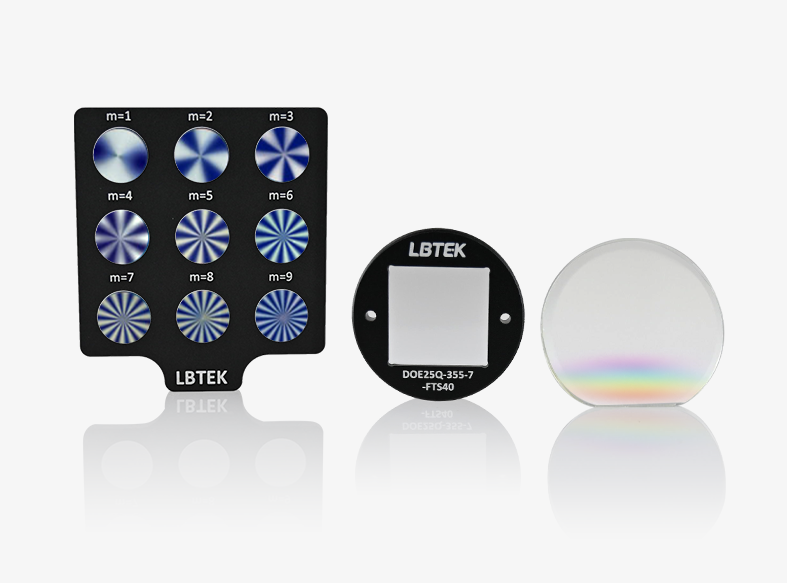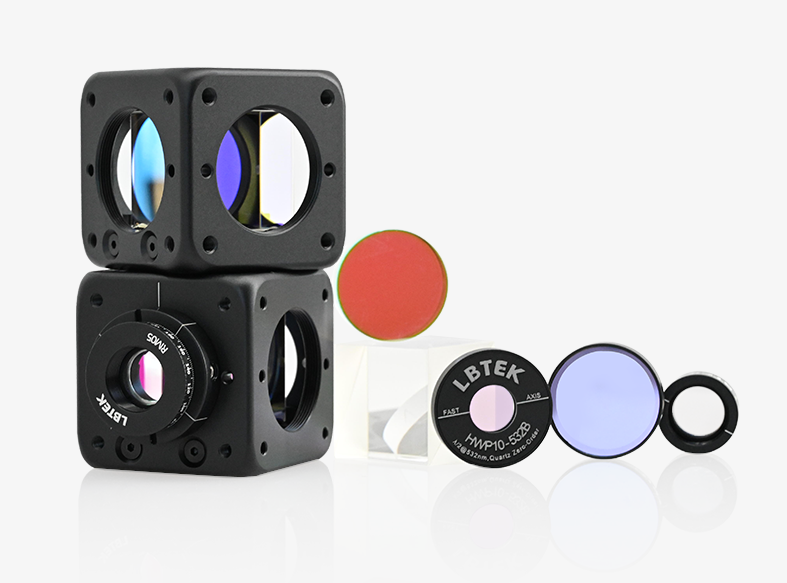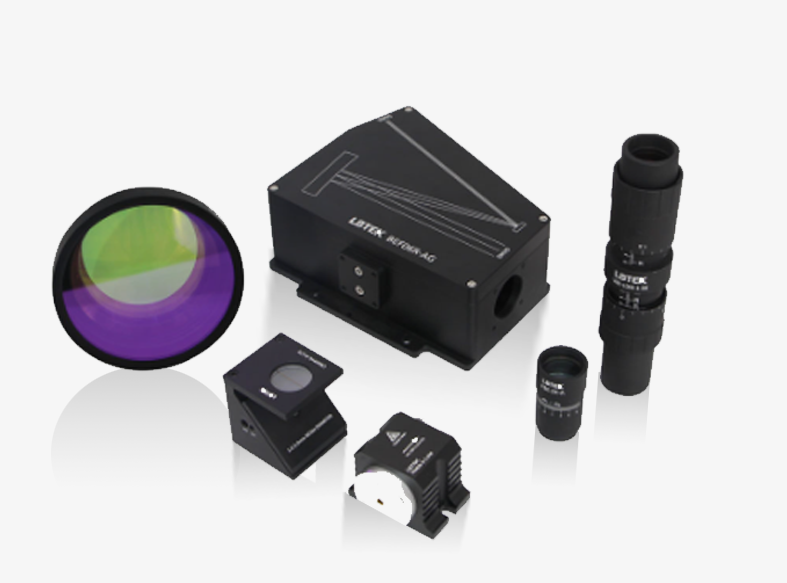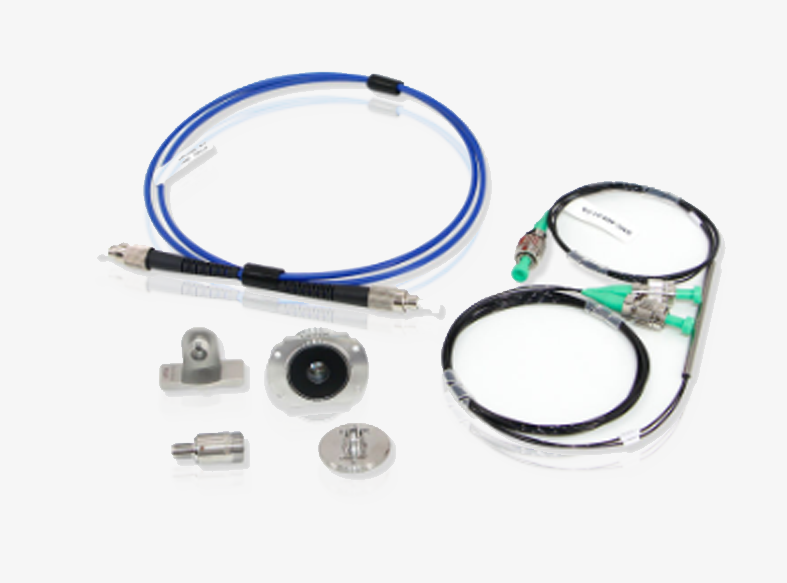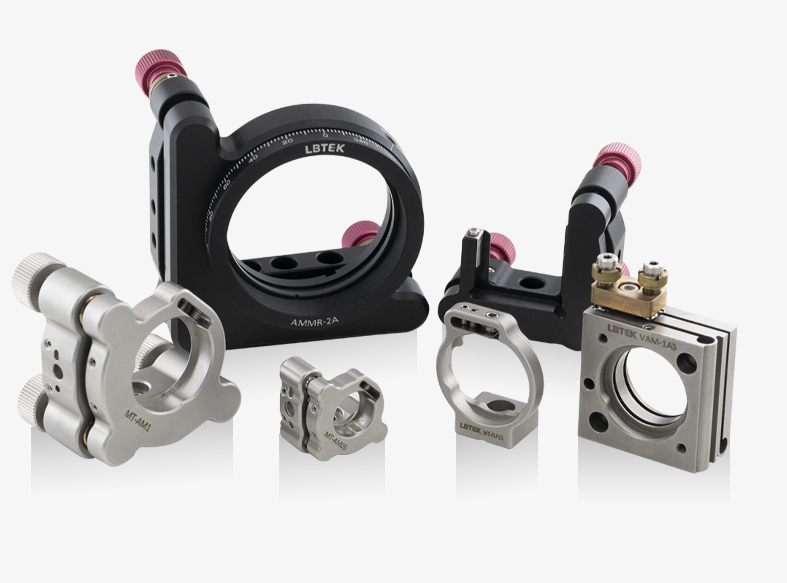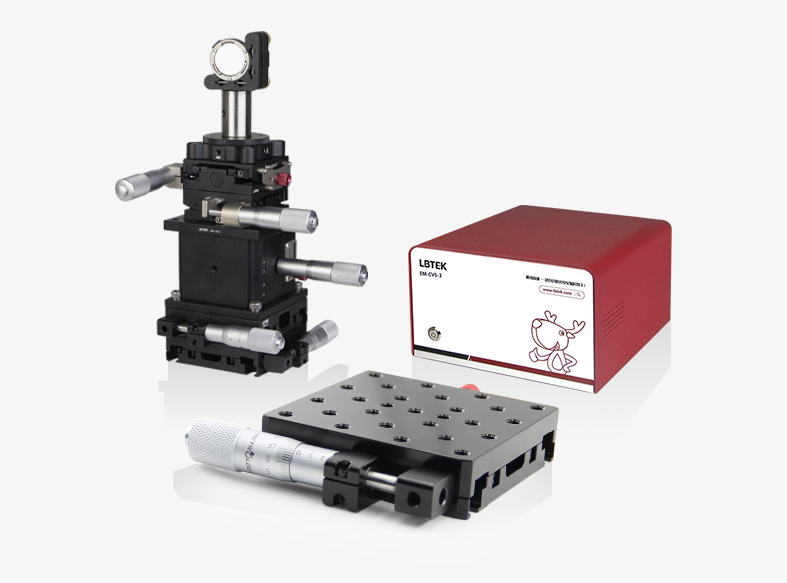- Operating wavelength: 400-700 nm, 700-1700 nm
- Two thin-film linear polarizers included
- Commonly used for continuous brightness reduction

- Two economical thin film linear polarizers included
- Suitable for low power applications
- SM1 internal and external threads
The double linear polarizer variable attenuator features SM1 external threads on the incident end and internal threads on the emergent end, allowing it to be connected to other optical components or assemblies via threading. When screwing the double linear polarizer variable attenuator into an SM1 internal thread component, the transmission axis of the incident polarizer can be aligned with the polarization direction of the input light source by tightening the SM1LR slotted locking ring with the PCW-A wrench (sold separately) to secure the adjustable polarizer. When the arrow on the knurled ring aligns with (+), the transmission axes of both polarizers are parallel to the polarization direction of the incident light, resulting in maximum transmission. When the arrow aligns with (-), the transmission axis of the incident polarizer is parallel to the polarization direction of the incident light, while the transmission axis of the emergent polarizer is perpendicular to that of the incident polarizer, resulting in minimum transmission. The knurled rotating ring can be turned beyond the (+) and (-) marks by 15° to meet the adjustment requirements from maximum to minimum transmission. Rotating the emergent polarizer allows continuous adjustment of the output light intensity. The transmission level can be fixed through using an M1.5 hex key to tighten the M3×2.5 flat-head set screws to lock and fix the emergent polarizer. The double linear polarizer variable attenuator is suitable for low-power applications. When used to generate the linearly polarized light, it offers a high extinction ratio and a wide incident angle with a range of ±20°.
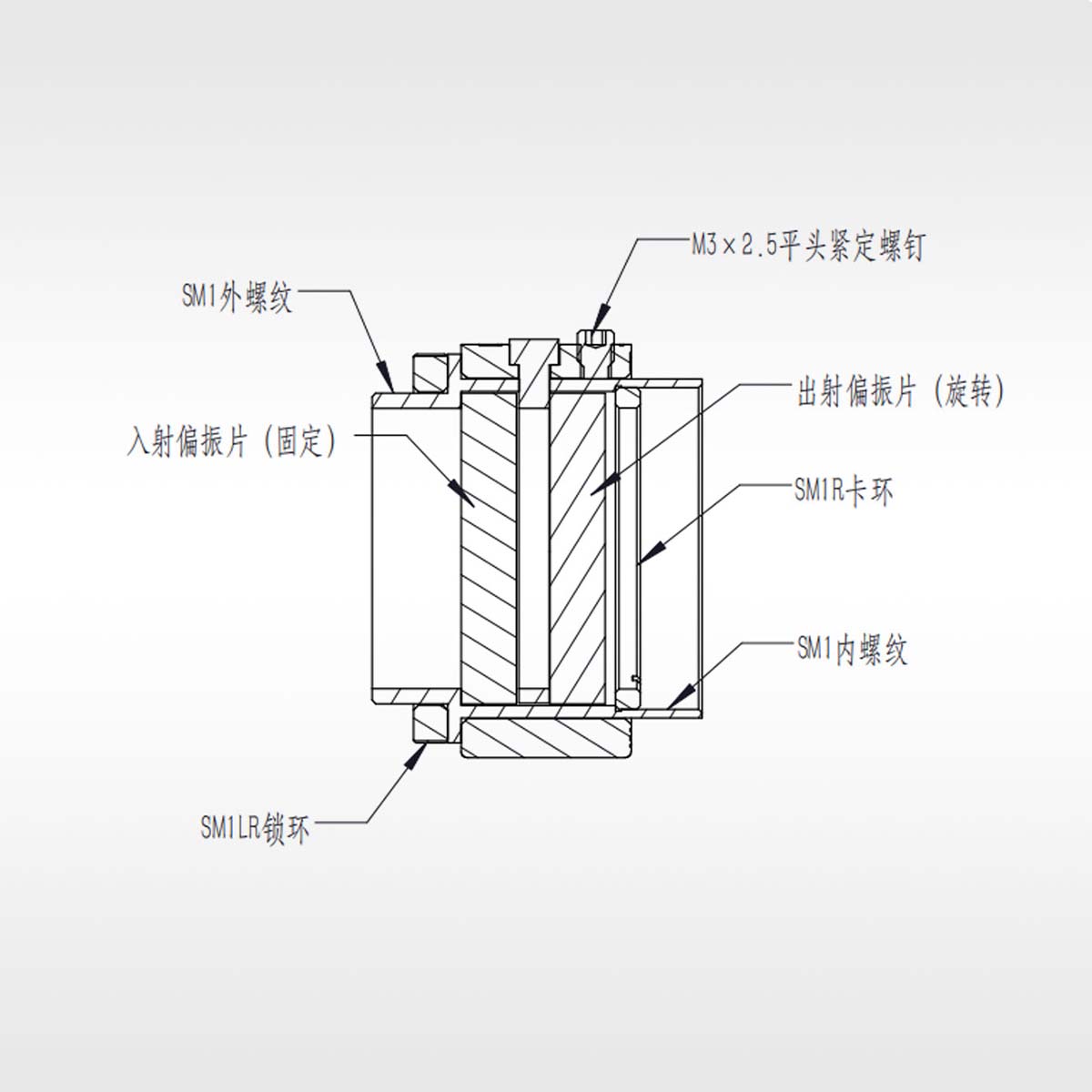
The propagation direction of the LBTEK Double Linear Polarizer Variable Attenuator and the set screws of the emergent polarizer
Product Model | Clear Aperture | Operating Wavelength | Angle of incidence | Unit Price | Compare | Lead Time | ||
|---|---|---|---|---|---|---|---|---|
| AFPL25-VIS | Ø21.5 mm | 400 nm-700 nm | 0°±20 ° | $239.39 | today | |||
| AFPL25-NIR | Ø21.5 mm | 700 nm-1700 nm | 0°±20 ° | $415.89 | today |
